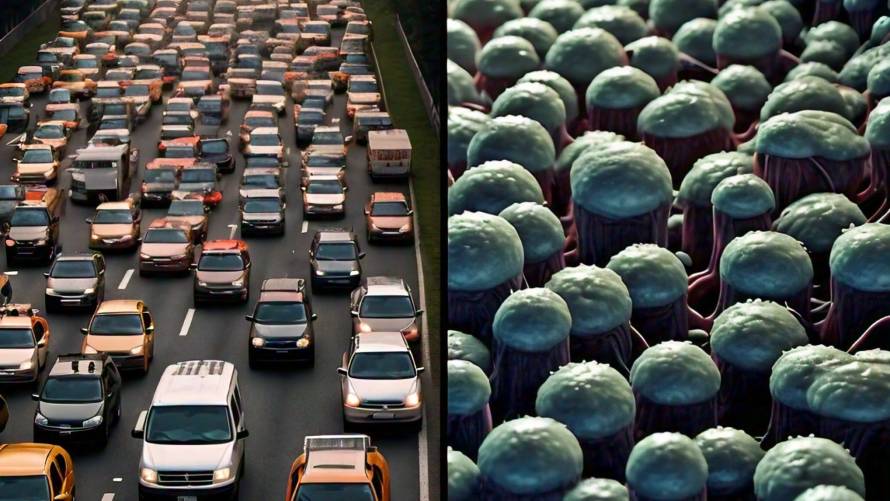Physicists Apply Statistical Mechanics to Understand Congestion
A new study by French physicists has found an unexpected connection between the flow of cars on a highway and the movement of bacteria towards food. Alexandre Solon from Sorbonne Université and Eric Bertin from the University of Grenoble, both working for the Centre national de la recherche scientifique (CNRS), developed a mathematical model to understand how annoying traffic jams form in these seemingly different situations.
The researchers took inspiration from models used to study the behavior of atoms and molecules, such as those in a gas being heated or cooled. They created a one-dimensional model that describes the movement of particles along a single direction, similar to cars on a one-way street or bacteria attracted to a nutrient source.
“The model is one-dimensional because the elements can only move in one direction, like on a one-lane one-way street,” explains Solon. “It’s an idealized situation, but not so different from what happens on many roads where you can find yourself stuck in rush hour traffic.”
Simulations Reveal Factors Contributing to Congestion
By running computer simulations with different parameter values, such as the density of elements, inertia, and speed, Solon and Bertin identified situations in which traffic flowed smoothly or became congested. They also observed different types of jams – large and centralized or smaller and distributed along the route in a “stop-and-go” pattern.
The researchers found that high vehicle density, frequent entries and exits from the flow, and delayed reactions from drivers can all contribute to the formation of traffic jams. “Among other things, a component of inertia has been inserted, which can be more or less pronounced, replicating for example the reactivity of a driver at the wheel,” says Solon. “We can imagine a fresh and reactive driver, who brakes and accelerates at just the right moments, or another one at the end of the day, more tired and struggling to stay in sync with the rhythm of the flow of cars they are in.”
Interestingly, the aggregation observed in bacterial colonies occurs without any inertia, and bacteria can move in any direction, unlike cars that must follow the direction of traffic. “It is thus interesting and surprising to find that both types of behaviors are connected and can be continuously transformed into one another,” remarks Eric Bertin.
The study, recently published in the Journal of Statistical Mechanics: Theory and Experiment (JSTAT), sheds light on the conditions that favor congestion and could potentially help in developing strategies to minimize traffic jams. By understanding the underlying mechanisms that lead to congestion, researchers and city planners may be able to design more efficient transportation systems and optimize traffic flow.
Keyword/Phrase: Traffic Jam Formation


